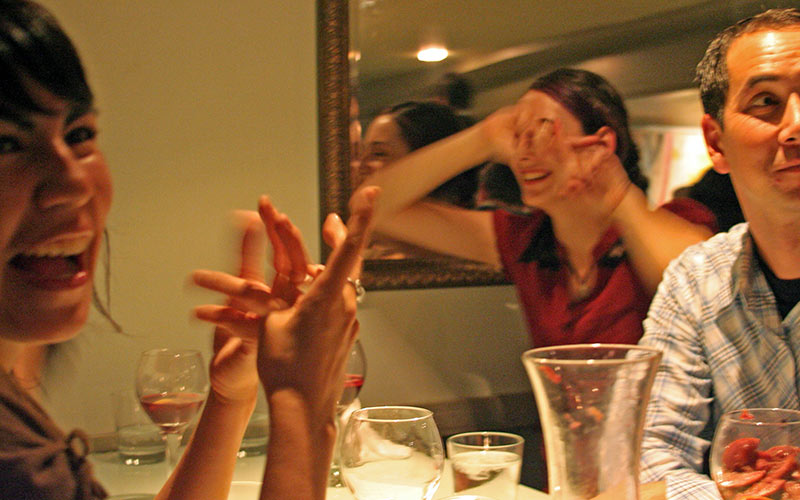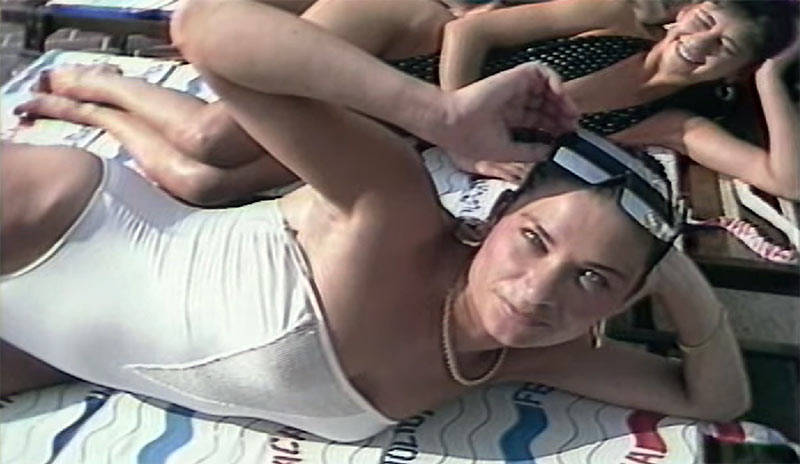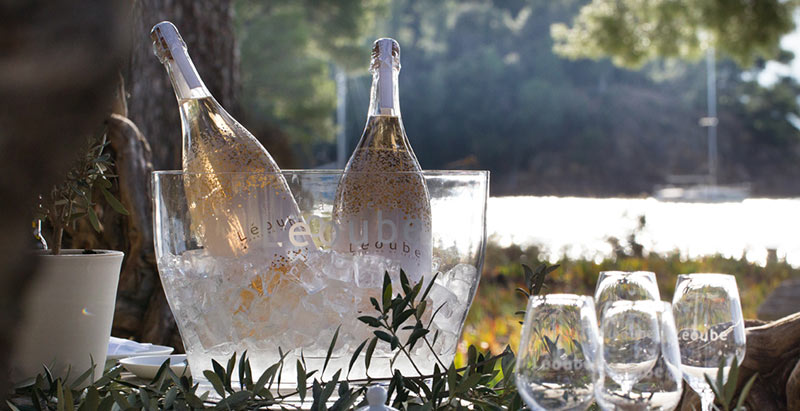Imagine walking in to a bar to meet up with your friends for a drink and a chat. Say there are four of you at the table and one person in the group is talking excitedly about something new that he or she has discovered while everyone else listens in. We probably all know this situation well but let’s put a twist on it. Say that you’re all talking about something at the table at the same time. Now imagine that the whole bar is doing this while at the same time, everyone is in theory listening. Now, multiply that times a million and take out all physical contact from the equation and you’ll approximate the conversations held on social media these days.
I bring up this point and how it applies to wine due to a short article sometime back about the “top influencers” in wine on social media. The crux of the argument was, those who have influence in social media already did in traditional media and the social side of things is just another distribution channel like having a newsletter or (gads!) print ads. In other words, social media alone is not an economic motor.
As you can read in the comments, I got some blow-back on this as people think I’m new to social media and thus “just don’t know.” An accusation of “newbie”, alongside “Nazi” (see Godwin’s Law), is a much-loved response on the internet to deflate someone’s digital balloon. In this case, my inferred “newness” just isn’t true as I’ve had a personal account on Twitter since early 2008 and the Vinologue account since later 2008. That’s eight years of using the medium. Instagram is similar in terms of usage over its lifetime with starting an account at the end of 2012 as soon as the application was available for Android devices. That means fours years of use there as well. And Facebook (which is my most hated social media platform) I starting using way, way back in 2007.
Social media and wine were fun a half decade ago. Even bottle-wank accounts (shots of a single bottle and nothing else) were amusing to look at it. There was a good deal of interaction, even if it was ultimately meaningless digital farting in the end because after all, a little farting now and again feels wonderful. Retweets on Twitter were aplenty and likes on Facebook even more so. Then things started to change.
The first problem started when Twitter introduced the “like” to copy Facebook. This was the beginning of the end for Twitter as people “liked” things more than retweeted them and thus there was much less dissemination. And again, this goes back to the opening paragraph because the passive use of likes versus the assertive use of retweets took over and people’s account were much more just their own broadcasting as likes were done out of sight. If some yaphole was constantly pitching his own book and not putting out interesting retweets because he just “liked” everything instead, it suddenly got a lot less interesting and by “less interesting” I mean, “super shitty.”
There was also “social fatigue” that set in. If you look at the Twitter account of Catavino and see that they have 49,000 followers, you might assume that this is something impressive. The truth is, their followers have been dropping off steadily at a rate of 1,000 a year and their retweets and likes are paltry for the number of eyeballs that they in theory reach. Even if they reached 10 likes on a tweet, that would still only mean participation 0.0002% of their total followers.
Admittedly, they’re doing little to engage the account these days, but they arrived at this total by being an early adopter of Twitter and then being a recommended follow by Twitter under “wine” back when Twitter was doing such things. This gave them a ton of followers early on, but it’s quite obvious that a huge magnitude of these accounts are inactive or spam accounts at this point and actual reach is nearly non-existent.
This is a problem for many in that there has been a tremendous drop in participation in Twitter but a lot of this was Twitter’s own doing as it came at the same time they introduced advertisements. This is also a problem for Instagram where I’ve seen engagement on my accounts at least halve is not be reduced to 25% of what it used to be despite the fact there’s still some quality shit going up there. I mean look at this, that’s crazy awesome! Despite my feelings of awesomeness, only 4% of the total account followers liked it. That used to be more like 20%.
So overall we’re looking at dropping participation in the current social media channels with an increase in broadcasting and general noise. How in the hell do you expect to actually push a product with this? Well, there are two ways. One is to pay Twitter or Instagram’s blood money for advertising. Or then you pay some “social media expert” what amounts to protection money to keep tweeting, liking, and trying to “viralize” your content. In either case, this should seem familiar to something else we already know which is yes, plain ole advertising.
And that’s what it comes down to in that the only “social” aspect of social media is that a company like Facebook has managed to glean all your personal details and offer direct advertising placement in a way never seen before. Products aren’t pushed by your social contacts advocating for them but via technology that’s very much similar to Google’s AdWords which I seriously doubt anyone would make the mistake of calling “social”.
This ability of Facebook is both impressive as well as incredibly creepy but on both counts, it is not selling wine via social media as people would have you believe. It’s just direct advertising that many people believe to be effective although I personally have my doubts these days due to the aforementioned amount of noise in social media which allows no one to be heard.
I’ve naturally brought up all the inherent flaws in believing that social media is some new way to get people to know about your wine, but in general, this could be said about most products. The biggest issue for me in trying to sell wine specifically via social media channels is that wine is not only a physical item, but it’s one to be consumed. How the hell do you convey this message? One could say that this wasn’t possible previously in print advertising either to which I would fully agree and why print advertising only works for larger wine brands looking to sell their mass market labels.
In the end, there are for me, three groups who can actually drive wine sales: wine shops (or cavistes), sommeliers, and to a declining degree, wine journalists. The most important of these is the wine shop owner and specifically, the one in your neighborhood. They’ll learn your tastes better than any stupid app will because they can see in your eyes that you bought that DO Catalunya wine the last time solely for the price and they’ll be able to help you because it’s in person and direct. The same applies to the sommelier who can hopefully advise you well when dining out although as their existence doesn’t fully rely on your repeat business in the same way as a wine shop (you are there for the restaurant and not only the wine selection) they can often be less effective.
Then of course there are the wine journalists who have waning influence these days. Whether that is due to publications decreasing their wine space or just because people would rather talk to someone in a wine shop as opposed to having wine advice dictated to them, I can’t say for certain. Whatever the case, the Parkers & etc. don’t wield the same influence that they did. People say this is due to the internet to which I say that this is true because it enables the wine drinking public to learn more on their own. It is not due to searching Twitter or Instagram that Millennials decide which wine to buy that evening–I mean, could you even imagine that with how much extraneous noise that goes on? Despite my general issues with this generation as I’m a grumpy ole Gen X-er, they are a much more informed wine drinker than ever seen before and it’s due to them educating themselves much more.
Still, the wine shops, sommeliers, and wine journalists will often share something in common which is that they’ll have social media channels and people will listen to them. Why? Because of their substantiated real world presence. Crap, I still read the tweets and get the newsletter of Biondivino because Ceri and her team were so awesome when I lived in San Francisco. It’s not the other way around that I came across Biondivino while living in Spain due to their social media outreach. Even in the case of Gary Vaynerchuk who rose to great prominence with his Youtube channel and thus people say that he is (was?) the greatest social media wine salesman. There is a grain of truth in this but ultimately why did people listen to him? Because he has a wine shop in New Jersey and knows a lot about wine but even though he had such prominence–although in a time when Youtube was more a broadcast option and had very little social about it. In recent days, he too has been lost in the social media morass.
While I’m sure people can nitpick at one point or another, I hope that the point is clear that social media alone doesn’t sell wine and as time goes on, this will be even less the case as interaction goes down, not up. All it has done is allow a few posers to elevate their status and as we now know, even some criminals flaunt themselves as experts. But all this is for their own benefit, not wine as a whole, and most definitely not when it comes to you choosing what to put in your glass this evening.




Ok, you got us. Our Twitter account has a ton of fake profiles. I have to say when we were put on that recommended users list it was good and bad at the same time. Big numbers, shitty engagement. Today 80% or so of those 50000 are worthless. That said you are wrong on influence. One nice thing about twitter is the chance to capture by serendipity and we do that a lot with our account. Our numbers were declining like you say for a long time, but today are slowly growing again, and our outreach from twitter is a lot more than we used to get. In truth we sell quite a bit of wine by twitter. How? Well we are now a tourism agency and we are contacted a lot via Twitter and Facebook to do tours around wine. These tours sell a lot of wine.
I do think your idea that social media doesn’t sell wine is a bit simplistic. You are right, I don’t see a bottle on instagram then run and buy that bottle. But I do learn about a region, or person, or style and then explore and it does lead to me buying wines. I buy a lot of wine because of social media, not directly this bottle or that, but a friend tweets a few pics of a particular style region and then when I’m in the shop I might buy some of that style directly because of the social media I consumed.
Also to the Catavino point, we sell tours, tours sell wine. We are largely supplied with new customers via social media activity. Or so the clients who book with us claim that is how they find us. Today I have clients all over the world sending me pics of wine lists once they get home saying “which Portuguese wine should I buy Ryan…” having fallen in love with the wines when they were here. They are new converts and the ones buying the wines that they didn’t know before finding us on a social channel or two.
So yes, social media sells wine. It’s not as direct as handing a bottle to a customer in a shop, but I do think it can be more powerful and long lasting.
Thanks for the mention! :)
The mention wasn’t meant as an outing of your account to infer that you’d bought followers or anything (there are plenty of others as such that I could have mentioned) but more how an initial wave of interest in social media has translated in to a massive wave of disinterest. That listing did benefit you in giving a sense of purpose to those who only look at follower counts but yes, ultimately it’s been a disservice as you look at the engagement rates on your tweets and all it does is give fodder to some dude with a wine blog to pick at. Of course I do mention my own interactions falling off heavily as well as it’s part of a larger trend.
I think a lot of the context you’re mentioning is in the form of blogs which I have yet to understand why they get lumped in to “social media”. If those count, then the online articles by Decanter and Harpers are “social media” as well. But, there’s good staying power in blog articles still as they’re actually static and I’m a bit sad that blogging activity has fallen off as well. Of course wine media in general seems to be in a freefall.
Strange you see that. Social media is still driving plenty of sales, whether or not you include blogs. Twitter and FB sell wine. Lot’s of wine. Ask Paul Mabray, he can give you the stats. Our blog is alive because of social media, that is how people find our articles and our content. That is basically the only way they do today. So whatever I benefit from is because of social media.
Your arguments here are not fact based and purely anecdotal. With real data out there it would be worth accessing it and seeing the real numbers. There is a lot of good solid data on this.
Alive and well in wine.
A bit of provocation always works as a path to enlightment and being more strategic when using social #paytoplay #LTV #serendipity
Hahahahaahhaha, love it!!
Coming late to the party . . .
“In the end, there are for me, three groups who can actually drive wine sales: wine shops (or cavistes), sommeliers, and to a declining degree, wine journalists. The most important of these is the wine shop owner and specifically, the one in your neighborhood. They’ll learn your tastes better than any stupid app will . . . and they’ll be able to help you because it’s in person and direct. . . .”
Let me proffer this exhibit from a Wine Opinions online survey of wine industry professionals on what influences consumer purchases:
URL: https://1.bp.blogspot.com/-ZgHHdvhpGvg/WJvNd5wYcyI/AAAAAAAAGvU/87oXLHPBmSwICHyxOyp6dafu0EJAlReAQCEw/s1600/influences.tiff
And let me proffer this Wine Gourd wine blog post:
“The role of Wine Influencers — more of the same”
URL: https://winegourd.blogspot.com/2019/07/the-role-of-wine-influencers-more-of.html?utm_source=feedburner&utm_medium=email&utm_campaign=Feed%3A+TheWineGourd+%28The+Wine+Gourd%29